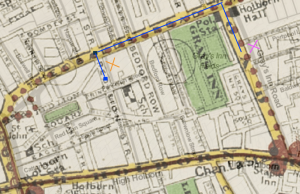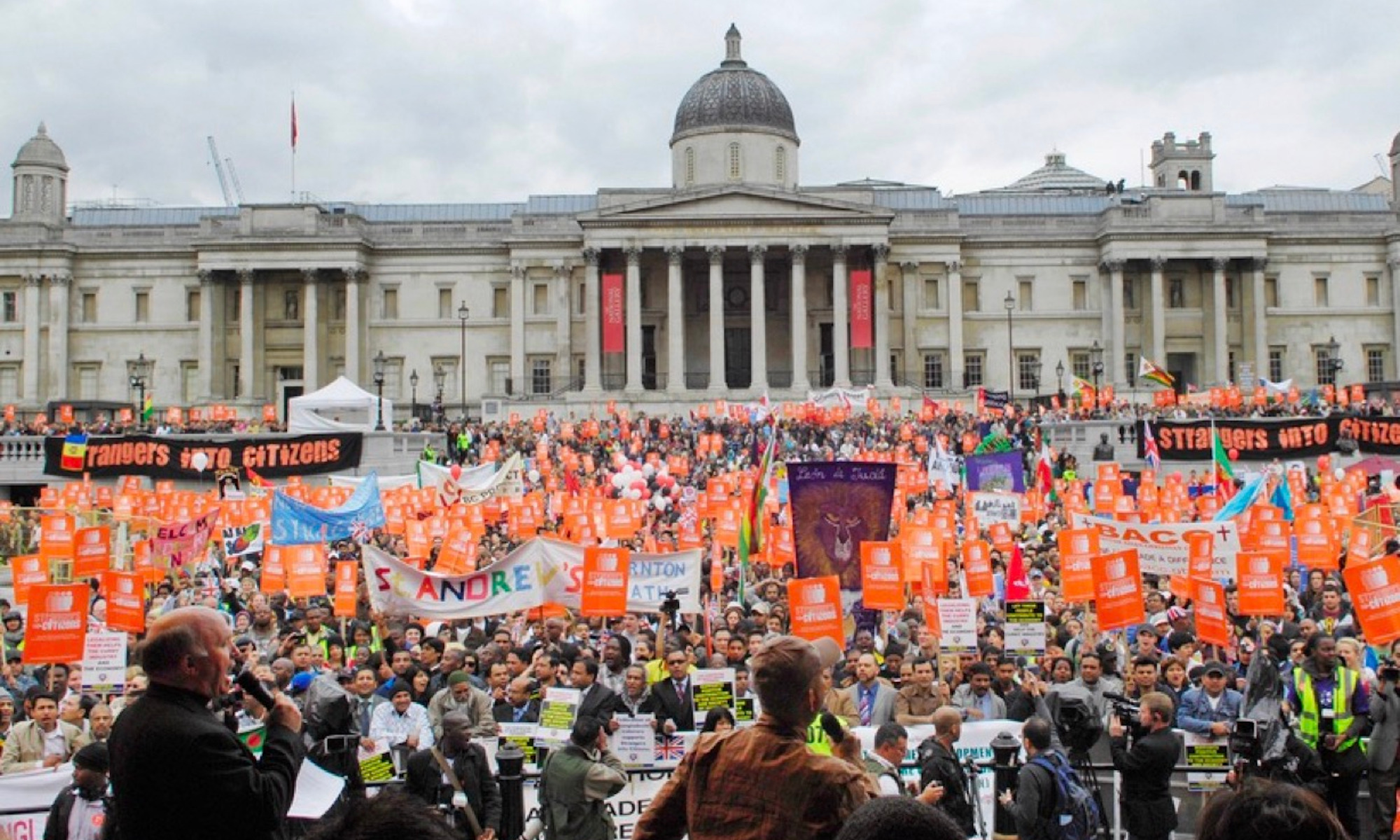“More laudanum and some opium, quick!” were the last words you heard before you were hustled outside, handed your cap and tossed some coins. You barely register the click of the door closing behind you as you survey the bustling Gray’s Inn Road and hurry your way up the street toward Theobalds Road. Although you were initially glad to be rid of the stench and filth of the Royal Free Hospital’s dysentery quarters, your nose is soon overwhelmed by the foul smell of the horse dung and urine you slosh through on the streets. As you come across a gaggle of boys your age trying in vain to dodge the oncoming carriages and scoop up horse droppings, you feel a new wave of appreciation for your position with Dr. Marsden and pick up your pace.
A left on Theobalds Road and you suddenly have an unobstructed view of Gray’s Inn Fields, and your favorite gardens and walkways in the area. Briefly tempted to dally with the strolling masses enjoying the day, you trudge on and soon turn onto Red Lion Street. You immediately get caught up in the huddled mass of people outside your destination: L.W ROE, Chemist. Shouting, “Urgent order, Royal Free Hospital!” you shove your way through children in line for the new shipment of Ayer’s Cherry Pectoral as well as a few coughing old women, desperate for chlorodyne. Once you get to the counter, you are immediately serviced by the chemist’s apprentice, long-familiar with your face as the Hospital errand boy. He wraps your laudanum and opium (the cheap, varnish-coated kind) in brown parchment and you head back outside.

Finished with your errand sooner than expected, you contemplate whether you have time to check out Furnival’s Inn on High Holborn (you heard Charles Dickens might be back in residence) but quickly think better of it. Instead, you opt to venture further down Red Lion Street. A few buildings down you marvel at the shining looking glasses in a shop window. Pressing your nose to the window and peering inside, you can see a beautiful young woman admiring a delicate handheld mirror and chatting with the shop owner while her maid waits patiently. You watch her until the shop owner spies you and lets out an angry exclamation as he storms towards the door. Time to go, you think, and walk briskly back the way you came.

Before you turn back onto Theobalds Road, you pause at the tailor’s storefront. Looking down at your coat, torn at the cuffs and stained with the soot that permeates the air, you long for one of the stylish coats with glossy buttons featured prominently in the window. A crack of a driver’s whip brings you out of your daydream — you stood mesmerized in front of the tailor’s for far too long! Tucking your package of medicine into your chest, you race back to the Hospital, praying you return fast enough to not get your ears boxed.


